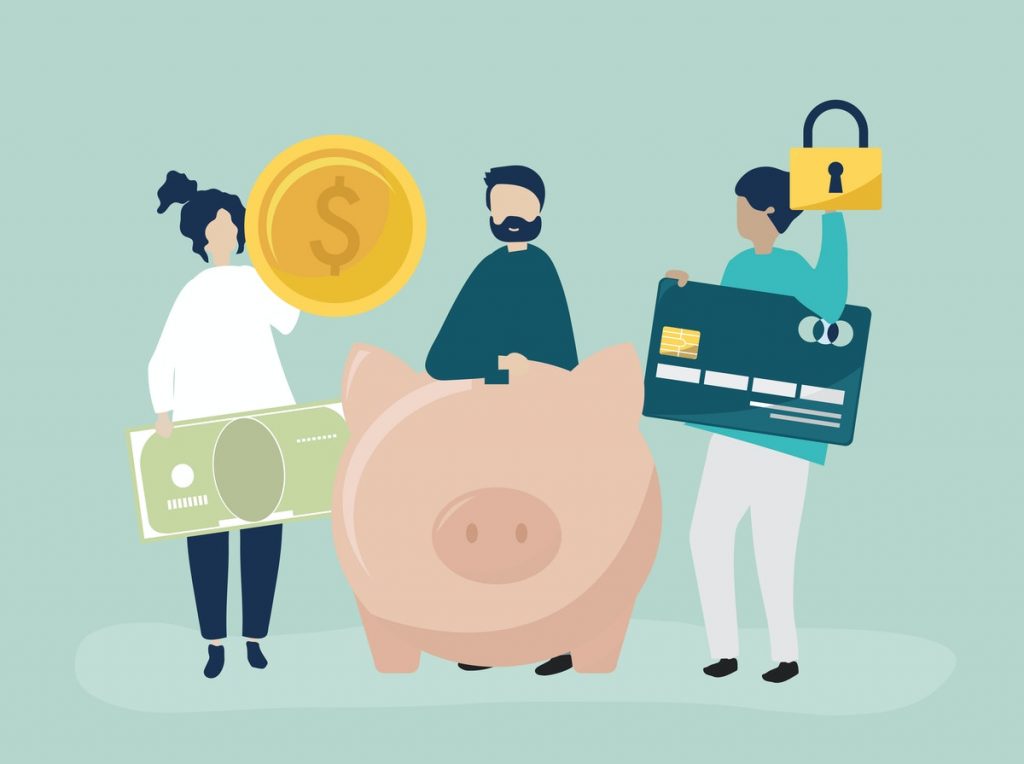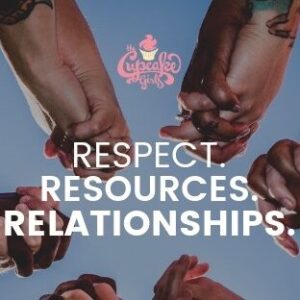
Credit Education
March is Credit Education Month, where we raise awareness for properly managing your credit.
Since I originally wrote this article, I learned that the FICO credit score system wasn’t even a thing until 1989. Meaning it’s relatively recent. I’m of the mindset that we should reform how credit is calculated or get rid of the scoring system entirely. I’ve found it’s used mainly to keep poor people from escaping poverty or owning anything. Unfortunately, until we do that, we’re stuck having to adhere to a messed-up system.
One must understand a couple of things about credit – their score and what factors into that score. Through understanding these factors and implementing certain practices relating to them, you’ll be more likely to have a higher credit score and maintain it.
What are Credit Scores?
To begin, a credit score is generally a 3-digit number, usually ranging from 300-850. A score of 300 is considered a bad score, and 850 an excellent score. Lenders use this number to determine how likely someone is to pay their debts.
There are several different kinds of scores that analyze varying types of data used for different inquiries for lines of credit. Perhaps the most popular and well-known is the FICO (Fair Isaac Corporation) score. It’s used when applying for a car, a house, a credit card, or other loans.
According to Credit Karma, an online service where people check their credit scores for free, “FICO creates three versions of its base FICO® scores to work with data from each of the major consumer credit bureaus: Equifax, TransUnion and Experian” (Credit Karma, 2020), [1]. As a result of this, your score may vary from bureau to bureau. The information collected from these bureaus includes things like past and present payment history, any delinquent (late/missed) payments, open and closed accounts, the amount you owe, types of accounts, age of accounts, and so on.
These factors combine to paint a picture of “creditworthiness.”
Despite all the information collected when compiling a credit report, a lot of your information isn’t factored in. Per Experian, in their breakdown of how they calculate scores, they listed the data they don’t collect. This includes your race, color, religion, national origin, sex or marital status; your age; your salary, occupation, title, employer, date employed or employment history; where you live; and soft inquiries, which we’ll touch on in a bit (Experian, 2020), [2].
Factors Impacting Credit Scores
Five main categories factor into your overall score. These include your payment history, the amount you presently owe, the length of your credit history (also known as your credit age), the diversity of accounts, and any hard inquiries or new accounts. Each of these categories accounts for a different percentage of your overall score.
Payment History – 35%
This criterion is fairly self-explanatory. This includes all payments you’ve made to various accounts, both on-time and late, as well as any public records. For example, if you have filed for bankruptcy, this will show up on your report. This is particularly important because of how long delinquency like bankruptcy can impact your score. According to Ellen Chang, a writer for the Experian website blog, she stated that “Depending on how you file, the bankruptcy could remain on your report for seven or as long as 10 years” (Experian, 2018), [3].
Touching on late payments, there are a couple of things to note that are outlined in a separate article by Credit Karma on the subject.
- A late payment can typically stay on your report for 7 years, but it can often come down to the lender regarding whether they report it and when.
- The longer your account is delinquent, the greater the impact on your score.
- The greater number of delinquencies will hurt your score more than a single one.
- The longer a delinquent payment is on your report (i.e., the older the infraction), the less it impacts you.
- Take steps to lessen the impact of the score: write a “goodwill” letter to the lender in an attempt to appeal, negotiate, or dispute an error on a report, if marked late incorrectly (Credit Karma, 2020), [4].
Current Balance – 30%
The next major factor affecting your score is the amount of money you currently owe across all of your accounts. Known as your credit utilization ratio, take all your account balances, add them up, and divide them by your combined credit limits. You ideally want to keep your utilization below 30%.
There are a couple of ways to do this, such as spreading your purchases between multiple accounts. Pay more than the minimum payment due, and, if you can, make additional payments throughout the billing period. And try to get your credit limit increased. Be mindful of that, though, as most creditors will want to run another credit check for this.
Also, keep your balance low or pay off if possible to improve your score here. Creditors generally don’t like to see people with a revolving balance that they don’t pay down regularly. The more you can pay and the lower your overall balance and utilization ratio, the better your score will be.
Credit Age – 15%
This factor on your score might be a bit confusing if you don’t know how it is calculated. That’s because credit age is not simply your overall length of credit history based on your oldest account. Rather, it is the average age of all your accounts.
To calculate this, you take each account’s age, add them together, and then divide by the number of accounts. This is your account age that factors into your score. So when trying to achieve the seven years of history, remember it’s not a length of seven or more years.
Account Diversity 10%
This factor involves the mix of accounts you have and the number of accounts. For the best impact on your score, you want to have a diversity of accounts. It’s better to have a variety of account types than to have multiple accounts of the same type of credit.
For example, it’s better to have four credit lines with a car loan, student loan, and two credit cards than it is to have four lines of only credit cards. The greater the diversity, the better the impact on your score.
Luckily though, this factor of your score isn’t as impactful as other factors, so don’t feel like you HAVE to go out and open multiple different lines of credit. You’re more likely to mess up your score that way by having too many inquiries in a short timeframe.
Inquiries and New Lines of Credit – 10%
Lastly, the number of inquiries on your account and new lines of credit will impact your score.
With inquiries, it’s important to know the difference between a soft inquiry and a hard one.
A soft inquiry is a credit check of some kind that doesn’t impact your score. This includes free reports from your bank or credit card that offers this or a reporting website like Credit Karma. Background checks, like those for employment and any pre-approved offers for new credit cards, are also soft inquiries. Utilities and other service providers may also make an inquiry when you sign up for service. It may appear as either a soft or hard inquiry, so make sure to check with the company prior.
A hard inquiry, on the other hand, does impact your score. This includes applying for new credit cards, a personal, business, or student loan, or major purchases like a car or house. It also includes your rental credit history when you are looking to rent an apartment or home. Unfortunately, when you pay rent, it’s not reported on your credit. But it IS reported if you fail to pay rent on time. (One of the many reasons this credit system is so problematic.)
This inquiry stays on your history for two years. But, it impacts you less the longer it’s on your report within that time frame. While this factor doesn’t impact your score as much, it’s not wise to be getting multiple credit checks in a short period of time, as this suggests to creditors that you might take on a large balance between lines of credit. It’s also indicative of someone who’s using credit to make up for lost income (and there’s absolutely no judgment for that). So if you want to open multiple accounts, like at your favorite retail stores, don’t do it all at once; space it out.
An example of an exception to this rule includes when lenders see multiple auto loan inquiries, they don’t view it as a negative remark. This is because, at least within a certain period of time, it indicates active car shopping. These will still show as individual checks on your report, though.
(Article continues after the ad)
Please follow our fantastic site sponsors! They make content like this possible! 🙂
Keeping and Growing a Credit Score
Now that we’ve covered what makes up your score, let’s discuss how to maintain your score or make it better!
Do not get a lot of specialized cards, like those for department stores.
That discount might be tempting, but the interest rate is usually not. Consider getting a bank credit card instead; their rates are usually lower. You’re also more likely to get a higher credit limit. If you do get a store credit card, try to find one that can be used anywhere. For example, Costco offers a Citi Bank Visa card, accepted at any business that takes Visa.
Seek out the best reward programs.
If you want to get a credit card, try to find one with a good cash-back reward program. Especially if this is a card you expect to frequently use (like for business) or are planning on putting certain recurring payments on it (like your car insurance or utility bill). If you’re using the card a lot, you should at least be getting something back from it.
Also, look for additional features and programs that a credit card company might offer, like a free monthly credit score report or extra insurance on certain purchases.
Watch out for deferred interest on large purchases.
When making that big purchase somewhere on a store credit card that offers interest-free financing for a certain amount of time, make sure you pay it off within that time period. If not, you’ll be charged what’s called deferred interest.
Basically, the interest you didn’t pay will be applied in-full to whatever your remaining balance is, regardless of the amount. So if you bought a $1,000 TV and only owed $100 when the interest-free period ends, you’re paying interest on that $1,000, not the $100.
Pay off your highest-interest cards first.
Whatever card or cards you have that have a high-interest rate, it’s best to pay those down first. This will save you money in the long run on interest fees. That’s extra money that you could be using to pay off other debts.
Consolidate your debt if you find yourself with multiple accounts with a balance.
If you have multiple accounts and a revolving balance, consider consolidating your debt.
Essentially, you’d add up all the debt you have (or the debt you want to consolidate at least) and take out a loan – usually at a special interest rate from your bank. You then use that loan to pay off your debt. This frees up your lines of credit while reducing your revolving credit. Instead of having multiple accounts with multiple interest rates, you have one loan with a (usually) low rate.
(DON’T START SPENDING AGAIN THOUGH!)
Use your credit card for certain purchases for additional protection against fraud.
If you’ve ever had your cards stolen, you might notice a difference in the response by the bank or credit issuer.
Generally, when it’s your debit account, there’s more of a process in getting your money back, and you might not get the whole amount back, if at all.
But, if someone steals your credit card, the process is usually a lot easier. You call the bank or company to report the charge; they ask a couple of questions and usually remove the fraudulent purchase. Probably because it’s their money, and they’ll be sure to take care of that quickly. They’re also heavily insured for that loss.
That being said, when making certain purchases, like at a gas pump or gas station, always use your credit card when possible. These are some of those places where your card information is most likely to be stolen.
The same thing goes for online purchases. Always look for the lock icon in the URL bar to ensure the site is secured. And, consider using a secure payment account, like PayPal or some other payment encryption service.
Check your credit report frequently!
This one should be a given – be vigilant about checking your score. This allows you to catch any errors or irregularities on your credit report quickly. And, if you’re actively growing your score, checking frequently helps you focus on the areas you need to address most.
Lastly, give the kids a hand.
If you have kids and want to give them a head start into their financial life when they turn 18, consider adding them to your authorized user list for your credit card. This will help them to start with a great credit score when they get older. Bear in mind that any negative remarks on your report will reflect on their score, so be very careful with this. Only do this if you are good at paying your statements on time and have a good credit standing.
You can also open a line of credit in their name, but take care not to abuse this. Open the account, make a small purchase once a month, and pay it off. Don’t use your child’s account for large purchases or anything that you won’t be able to pay off or pay on time. If there is any chance that you won’t manage your child’s account responsibly – don’t do it.
Moving Forward
I hope you’ve learned something useful from this piece and that it helps give you an idea of improving your credit. As you grow your score, share your newfound credit knowledge with your friends and family!
Remember to consult with a financial professional whenever you’re thinking of making any big decisions regarding your finances. Maintaining your credit affects your ability to make large, important purchases, such as getting a new car or a house down the road. So make your road a little less bumpy and be credit-smart!
To learn more about saving, read ‘Delayed Gratification and Learning to Save.’
Conflict of Interest Statement
No companies/entities mentioned herein, such as Credit Karma, sponsored this article.
Thank you to our supporters and sponsors!
As always, we want to thank our Patreon’ Cultivator’ supporters and sponsors who help make content like this possible.
The following Patron(s) supported the production of this article:
Crystal Gropp
The following sponsors supported the production of this article:
Viva La Compost & LunaKai Lash




Pingback: Delayed Gratification and Learning to Save - Millennials in Motion Magazine